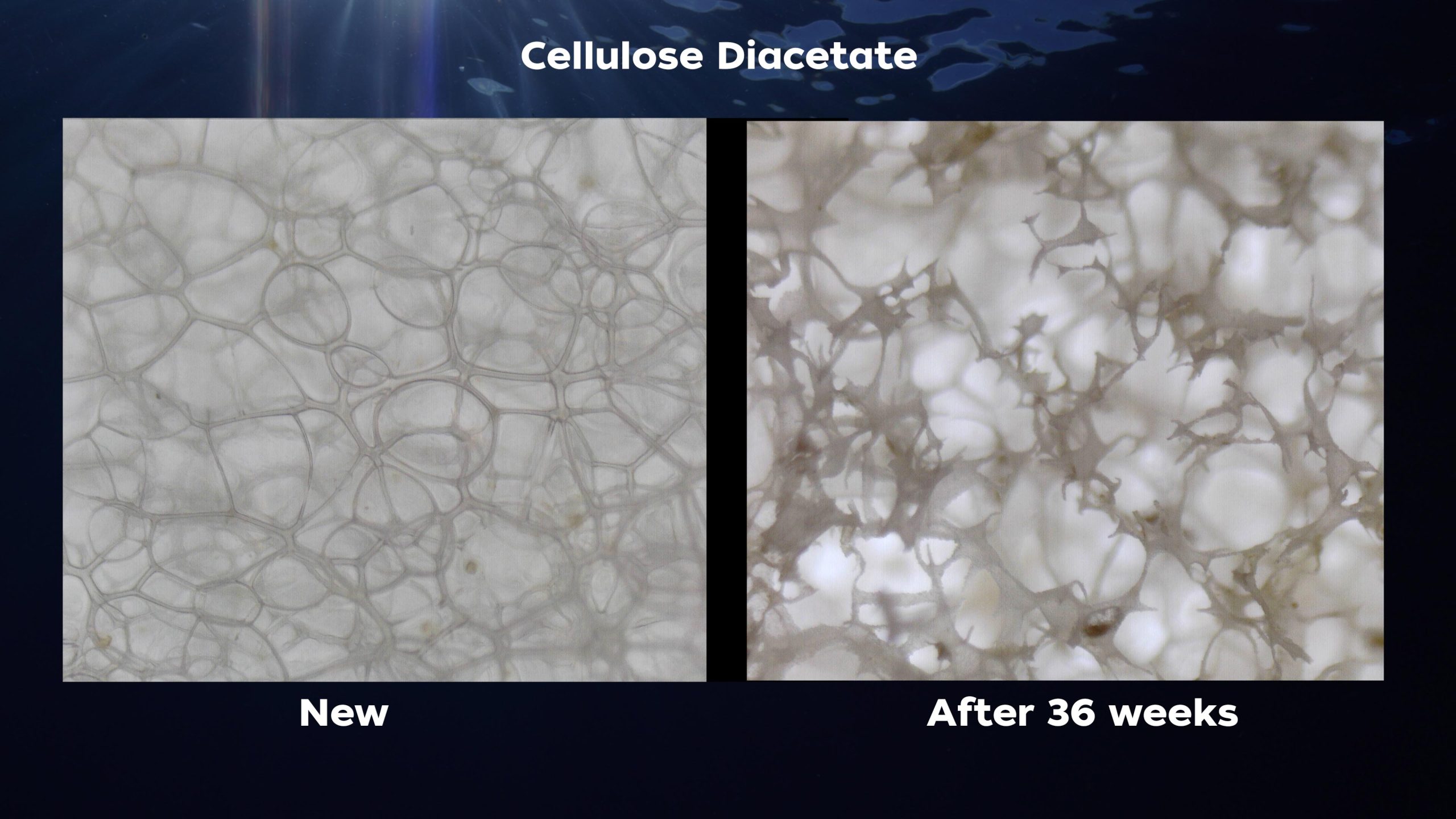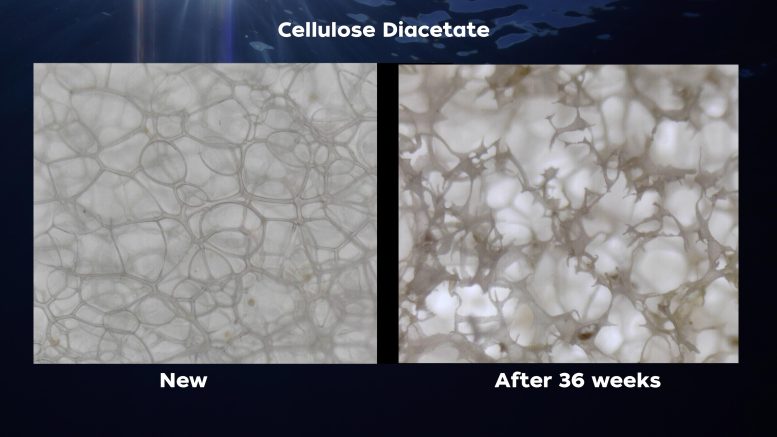

Scientists have made a significant breakthrough in bioplastics with a new form of cellulose diacetate (CDA) that degrades 15 times faster than traditional forms.
Tested under realistic ocean conditions, foamed CDA presents a viable replacement for Styrofoam in food packaging, significantly reducing environmental plastic pollution.
Biodegradable Plastics Research
Researchers at the Wood Hole Oceanographic Institution (WHOI) have been investigating for years to find out what types of plastics have the shortest and longest lifespans in the ocean, and what types of plastic products, such as straws and food wrappers, most commonly contribute to plastic pollution. With more biodegradable materials being developed, like cellulose diacetate (CDA)—a plastic-like polymer derived from wood pulp—researchers are racing to ensure they can replace traditional plastics without damaging marine ecosystems.
Breakthrough in Bioplastics
Now after years of testing, a new version of CDA was discovered to be the fastest degrading bioplastic material tested in seawater. Moreover, it’s a promising substitute for other foam plastic materials, like Styrofoam, which can linger in the environment for many years. In a new paper published today (October 17) in ACS Sustainable Chemistry & Engineering, WHOI scientists Bryan James, Collin Ward, Chris Reddy, Yanchen Sun, and Kali Pate, found that adding small pores—called foaming—to CDA material made it degrade 15 times faster than solid CDA, and even surpassing paper.
“What excites me most about this study is its translational nature. This study is the culmination of years of research focusing on understanding the fundamental controls on CDA biodegradation in the ocean,” said Ward, senior author on the study. He and the WHOI team partnered with scientists from bioplastic manufacturing company Eastman, who provided funding, contributed as coauthors, and supplied materials for the study.
“We translated the foundational knowledge into the design of a new material that simultaneously meets consumer needs and degrades in the ocean faster than any other plastic material we know of, even faster than paper. It’s a great success story in a field that often focuses on the negative aspects of plastic pollution rather than working towards solutions to the problem,” Ward added.
Advancements in Material Science
The study involved monitoring both foamed CDA and solid CDA in a tank of continuously flowing seawater from Martha’s Vineyard Sound, at a specially designed lab at WHOI. The researchers also control the temperature, light exposure, and other environmental variables to mimic the natural marine environment.
“Using continuous flowing seawater tanks enables us to bring the dynamics of the microbially active ocean into the lab. The ocean is continually changing, and it was important that we replicated this environment by replenishing microbes and nutrients, making for a much more environmentally realistic experiment,” lead author James explained. After 36 weeks, the team found that the CDA foams lost 65-70% of their original mass.
In a previous study using their dynamic seawater tank, the researchers tested straws made of standard plastic, paper, solid CDA, and foamed CDA, and found that the solid CDA and paper straws reduced in mass the quickest. Scientists then compared two straws made from CDA, one made from solid CDA and one from a foam CDA and found that the degradation rate of the foam straw was 190% faster than its solid counterpart, resulting in a shorter projected environmental lifetime than the paper straws.
“As a materials scientist and engineer, it’s been exciting to demonstrate that foams can be materially efficient, meaning they achieve functionality using the least amount of material possible, reducing cost and many environmental impacts,” said James. “In addition, when they are made from biodegradable plastics, they can be one of the least persistent forms of a material.”
Industry and Environmental Impact
Replacing Styrofoam plastic and single-use plastics, such as take-away containers that routinely leak into the ocean and are not biodegradable, is one of the most urgent uses for this material, according to the study authors. Foamed CDA products are already entering the market with Eastman launching a compostable, lightweight tray made of foamed CDA, designed to replace plastic trays used in existing industrial food packaging.
“Partnerships between industry and academia are essential for accelerating solutions to the most urgent global challenges, where academia can provide unique insights, and industry partners can use those insights to develop solutions at scale,” said Jeff Carbeck, Vice President of Corporate Innovation of Eastman. “That is how our collaboration with WHOI works; they significantly broadened our understanding of how our commercial and developmental materials degrade.”
Carbeck highlighted that this study demonstrates the potential that CDA foam holds in helping address challenges with single-use plastic packaging. “The properties of foams make them ideally suited for many packaging and insulation applications, and this research shows that foams made of biodegradable materials will rapidly degrade in the marine environment, should they accidentally end up there. Embracing biodegradable materials for consumer goods is a critical step towards preserving our environment, reducing plastic pollution, and fostering sustainability for future generations,” he said.
“One of the advantages of teaming with an industry partner is that we can ensure the new technology is scalable. One of the criteria when designing the new material was that it had to be a drop-in, turn-key replacement for Styrofoam goods, meaning that the companies that convert the raw CDA into the biodegradable foam don’t have to invest in new equipment,” Ward explained. “Advancing new plastics not made from fossil fuels, are compostable, and don’t persist in the environment as pollution, can be a win for consumers and the environment.”
Reference: “Foaming enables material-efficient bioplastic products with minimal persistence” 17 October 2024, ACS Sustainable Chemistry & Engineering.
DOI: 10.1021/acssuschemeng.4c05822